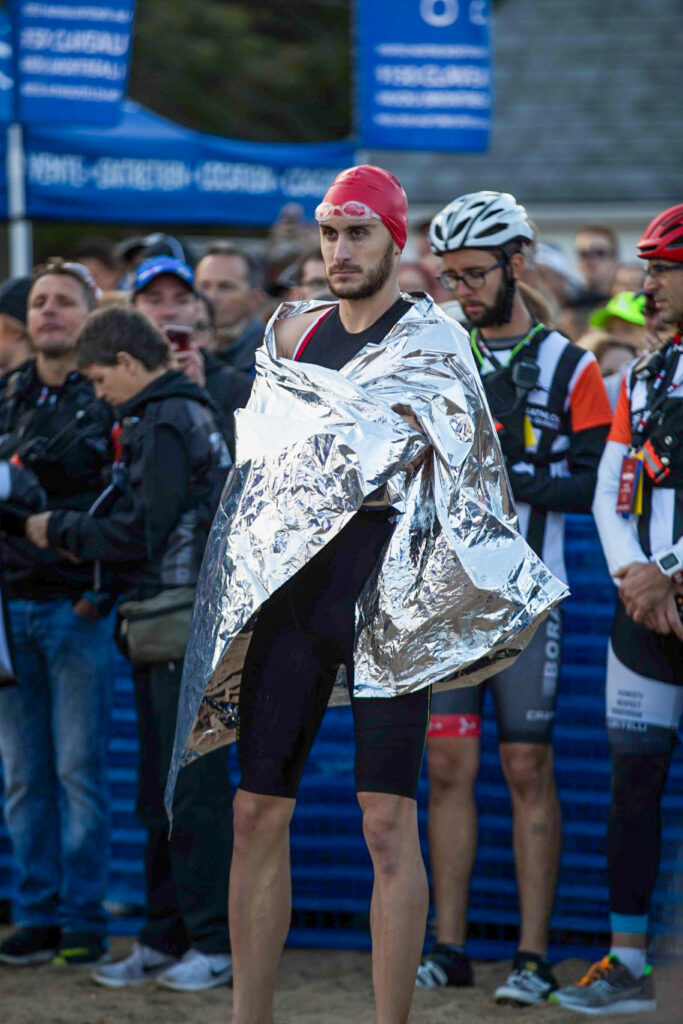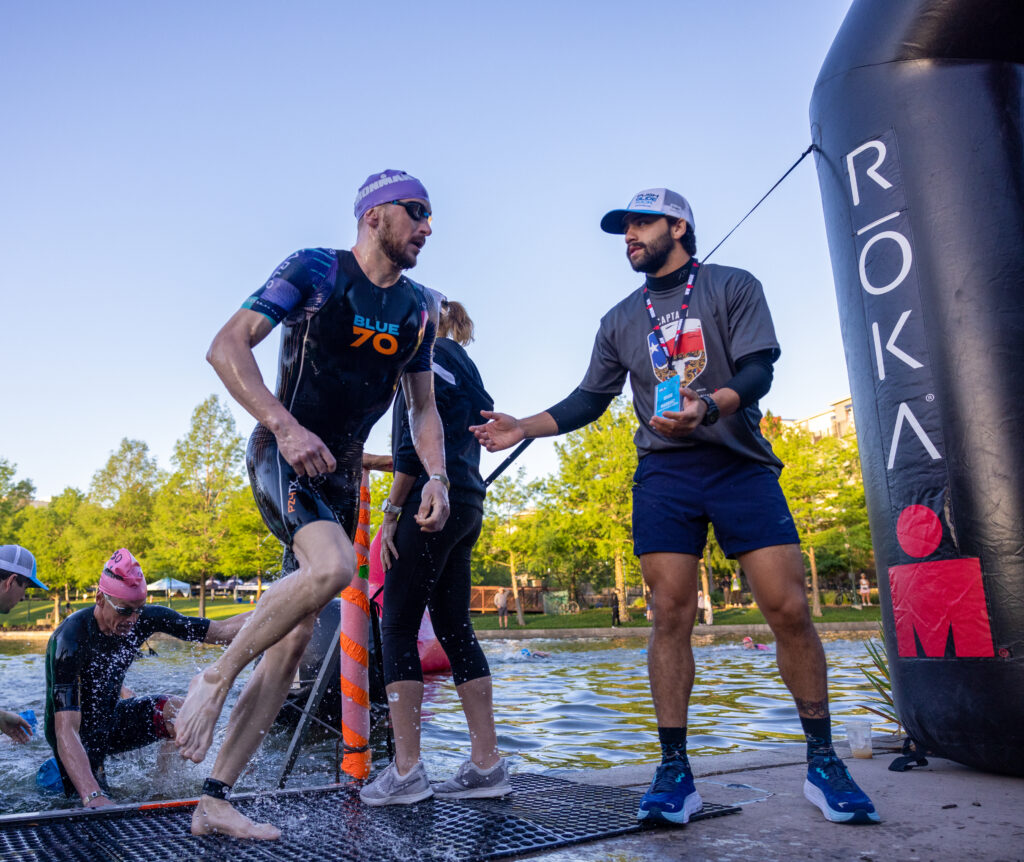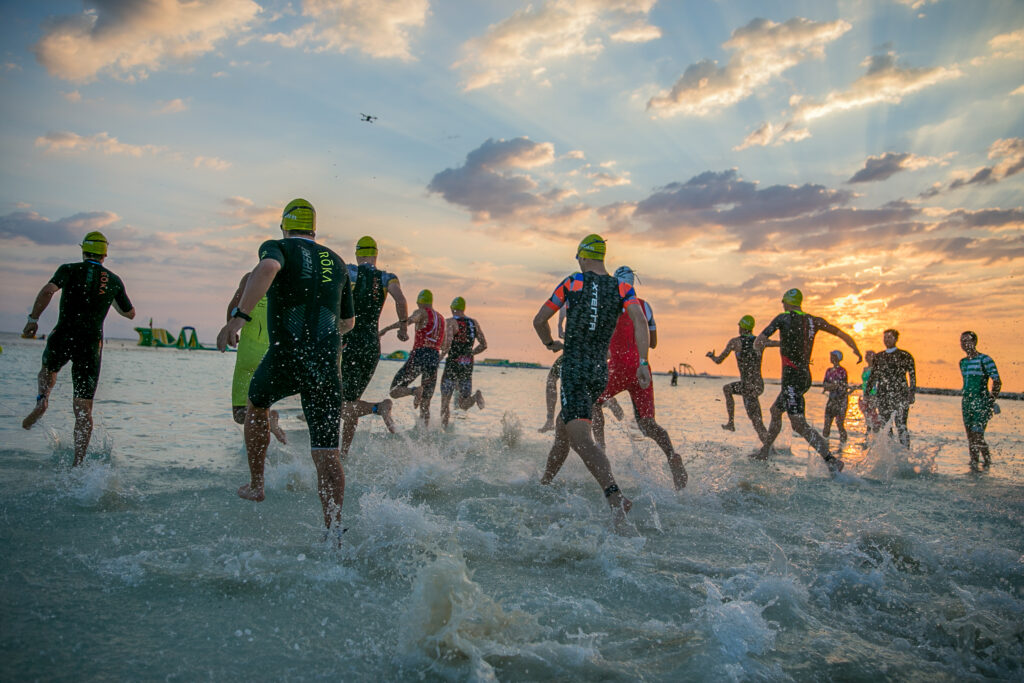Five out of six professional triathlons I’ve recently raced have had canceled or drastically shortened swims. The only swim that went off as planned, down the Tennessee River, was also rumored to be at risk of cancelation. In less than year, I’ve had more disrupted triathlon swims than in my prior 18 years of racing.
This spate of canceled and shortened swims goes beyond an anomaly. I believe that it reflects a shift across many race organizers to prioritize liability mitigation, high finisher rates and beginner-friendliness. I see it as part of a broader trend towards easier, faster and flatter courses. The unintended consequence is the erosion of the challenge and the accomplishment of long distance triathlon.
Pulling off a safe and successful race is no mean feat. I don’t have all of the information that race directors considered and I’m not here to critique each decision (reasons varied from waves to fog to cold). But collectively, these events represent a problematic trend and I’ll propose some solutions.
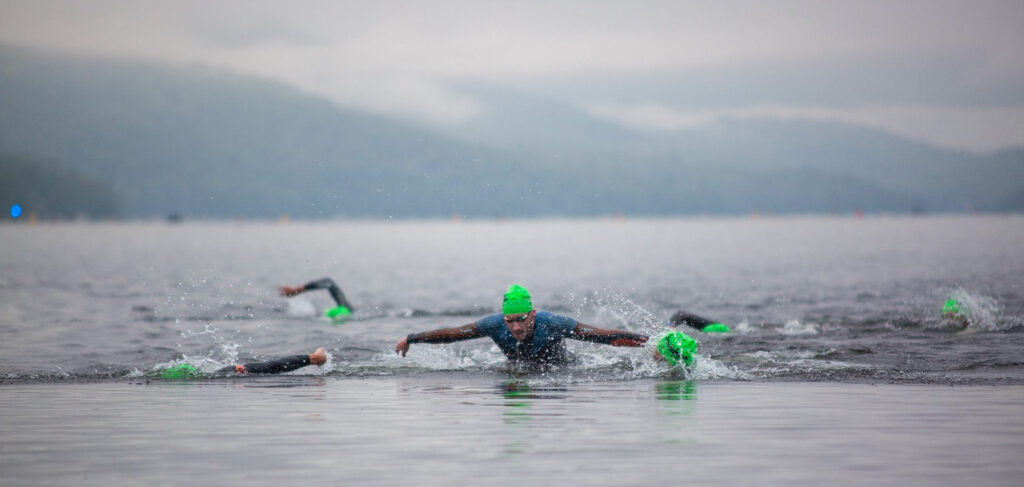
The tension between risk and reward
IRONMAN was conceived as an extreme sport—the ultimate test of one day endurance. There is inherent risk in any ultra-endurance race. We acknowledge this in every registration waiver form. In triathlons, the swim leg carries a disproportionate level of risk, not just of medical emergencies or death, but also of unpleasant experiences like panic attacks, hypothermia, failure to meet course cutoffs and DNFs. The swim is the most daunting leg of the race for many triathletes.
No amount of preventable swim deaths is acceptable and race policies should reflect this principle. However, we should accept a higher rate of less-than-pleasant swim experiences in order to preserve the accomplishment that is finishing a long distance triathlon. Some swim cancelations have left me wondering whether the decision had more to do with racer (i.e. customer) satisfaction than safety.
I would also speculate that some highly publicized deaths during triathlon swims and perhaps resulting litigation have made race organizers excessively liability averse.
In these swim cancelations, there is tension between the accessibility and the challenge of triathlon, the risk and the reward. My position is that shorter triathlons should prioritize accessibility and beginner-friendliness. Long distance triathletes should come prepared with the fitness and gear to tackle almost any conditions, and also acceptance of the inherent risks. Equally, race organizers should be ready to facilitate a safe and complete triathlon with contingencies for any foreseeable conditions.
Let athletes make informed risk assessments
Athletes should be empowered to make their own informed risk assessments based on the conditions and their abilities. This is already the status quo on the bike, where athletes have greater autonomy to gauge their risk tolerance. There are relatively technical, and sometimes shockingly dangerous, bike courses. For example, the mountain descent at the IRONMAN World Championships in Nice, France exceeds my personal risk tolerance to competitively and safely race.
Just as triathlon bike legs aren’t typically canceled due to rain, wind or cold, swims shouldn’t be so readily canceled either. Few conditions warrant an obvious swim cancelation, such as persistent lightning or high bacterial counts.
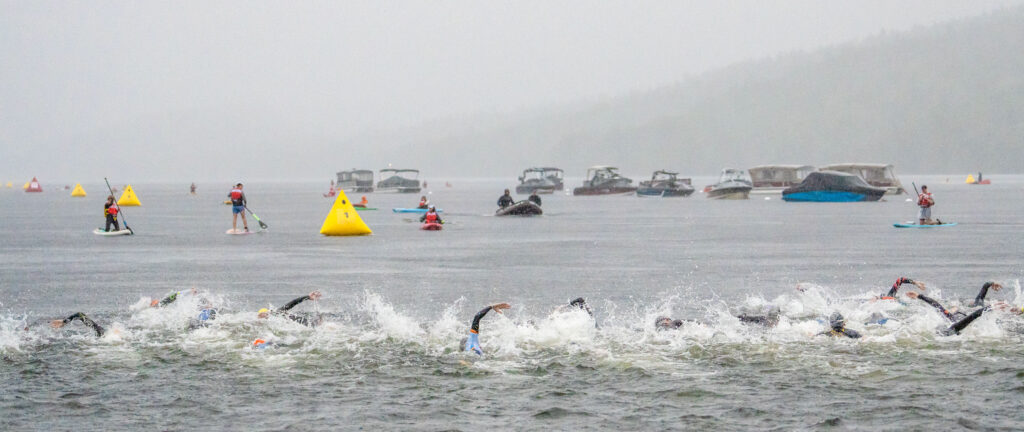
The pro swim should be held to a higher standard
I’ve experienced how disrupted swims impact pro triathletes and their livelihoods. The swim has a decisive effect on race dynamics and outcomes. One pro triathlete and front pack swimmer confided that a series of canceled swims were a major factor in his decision to retire. For me, it feels like a pair of sore shoulders is all I have to show for a two year focus on improving my swimming.
The pro triathlon swim can and should be held to a higher standard. Pro and amateur athletes typically complete the exact same course, with or without a swim. Cancelations usually occur on race morning when buoys and water safety assets are already in place. Why can’t the pro swim be greenlit in more cases, even if the amateur swim must be canceled for safety?
Is climate change another factor?
The climate crisis is also increasingly influencing race conditions and cancelations. Before I was a pro triathlete, I worked in environmental science and studied the effect of climate change on lakes and rivers. Climate change has been projected and documented to bring more intense and frequent extreme weather events. In 2023, harsh droughts and record-breaking Canadian wildfires completely canceled two of my races.
My Triathlon Swim Policy Recommendations
1. Raise the threshold for swim cancelations in long course races with respect to waves, currents, weather and temperature to preserve the challenge and accomplishment of racing.
2. Offer athletes a choice when swim conditions fall into a marginal but still acceptable safety range: either complete the full triathlon or, alternatively, a bike-run (with official results but without awards or world championship slots). This empowers athletes to make their own informed risk assessment based on their ability. Athletes choosing to swim in marginal conditions could be required to sign an augmented liability waiver.
3-i. Hold pro triathlon swims to a higher standard and avoid cancelations outside of extreme conditions.
3-ii. Appoint an independent pro representative at every triathlon to advocate for a fair, full and safe pro race. This role would ideally be fulfilled by the Professional Triathletes Organization, if it was operating more like the professional union that many of its founders envisioned.
4. Normalize a gradual progression towards long distance triathlons so that racers are better equipped to handle challenging conditions. Too many beginner triathletes rush headlong towards their first full distance race without developing fitness, skills and love for the sport over shorter distances.
